
Euonymus alatus (Burning Bush, Corky Spindletree, Corky spindle tree, Winged Euonymus, Winged
Euonymus alatus, known variously as winged spindle, winged euonymus, or burning bush, is a species of flowering plant in the family Celastraceae, native to central and northern China, Japan, and Korea. The common name "burning bush" refers to its bright red fall color.

winged burning bush, Euonymus alatus (Celastrales Celastraceae) 0016052
Euonymus alatus, commonly called winged euonymus, burning bush, winged burning bush or winged spindle tree, is a dense, mounded, spreading, flat-topped, multi-stemmed shrub that is particularly noted for its fiery red fall foliage color. It is native to forests, woodlands and scrub areas in eastern Russia, Japan, China and Korea.

Beautiful Autumn Background with a Sprig of Spindles Euonymus Europaeus .Fruits of Euonymus
Burningbush is a rounded shrub that grows to 8.2 feet (2.5 m) tall [ ]. The branches typically have prominent, corky wings [ ], although stem wings are reduced to ridges or absent on some plants [ ]. Burningbush is deciduous [ ], with opposite leaves [ ]. The inflorescence is a long-peduncled cyme with ].
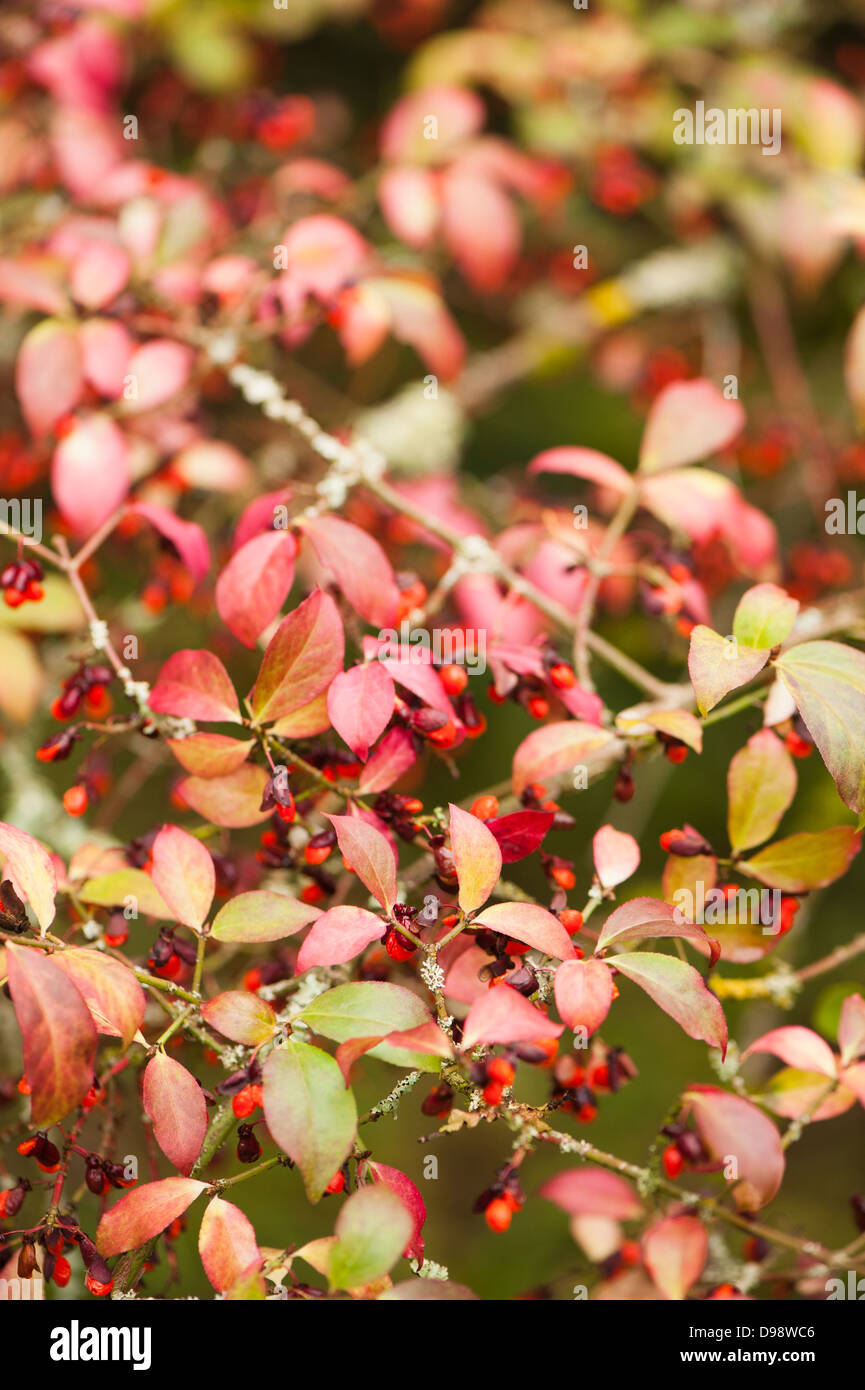
Euonymus alatus spindle fruit hires stock photography and images Alamy
Some notable varieties: 'Aureomarginatus,' which has green leaves and thick golden-yellow margins, and 'Microphyllus,' a compact and small-leaved cultivar that looks like a Euonymus - Buxus lovechild. 'Aureomarginatus'. 'Aureomarginatus' is offered by Fast Growing Trees in three-gallon containers. 9.
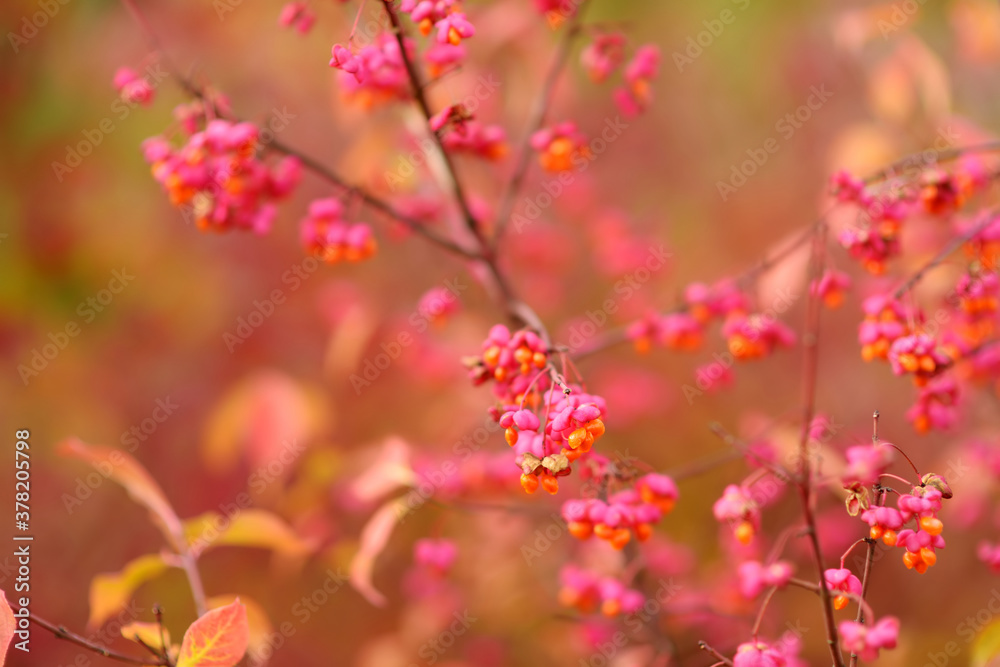
Bright red fruits of euonymus alatus. Winged spindle, winged euonymus or burning bush. Beautiful
This plant is an invasive species in North Carolina Description This plant is problematic and alternatives should be considered. Please see the suggestions in the left-hand column. Burning bush is a weedy species of deciduous shrub, single or multi-stemmed, that is drought tolerant and provides stunning red fall color.
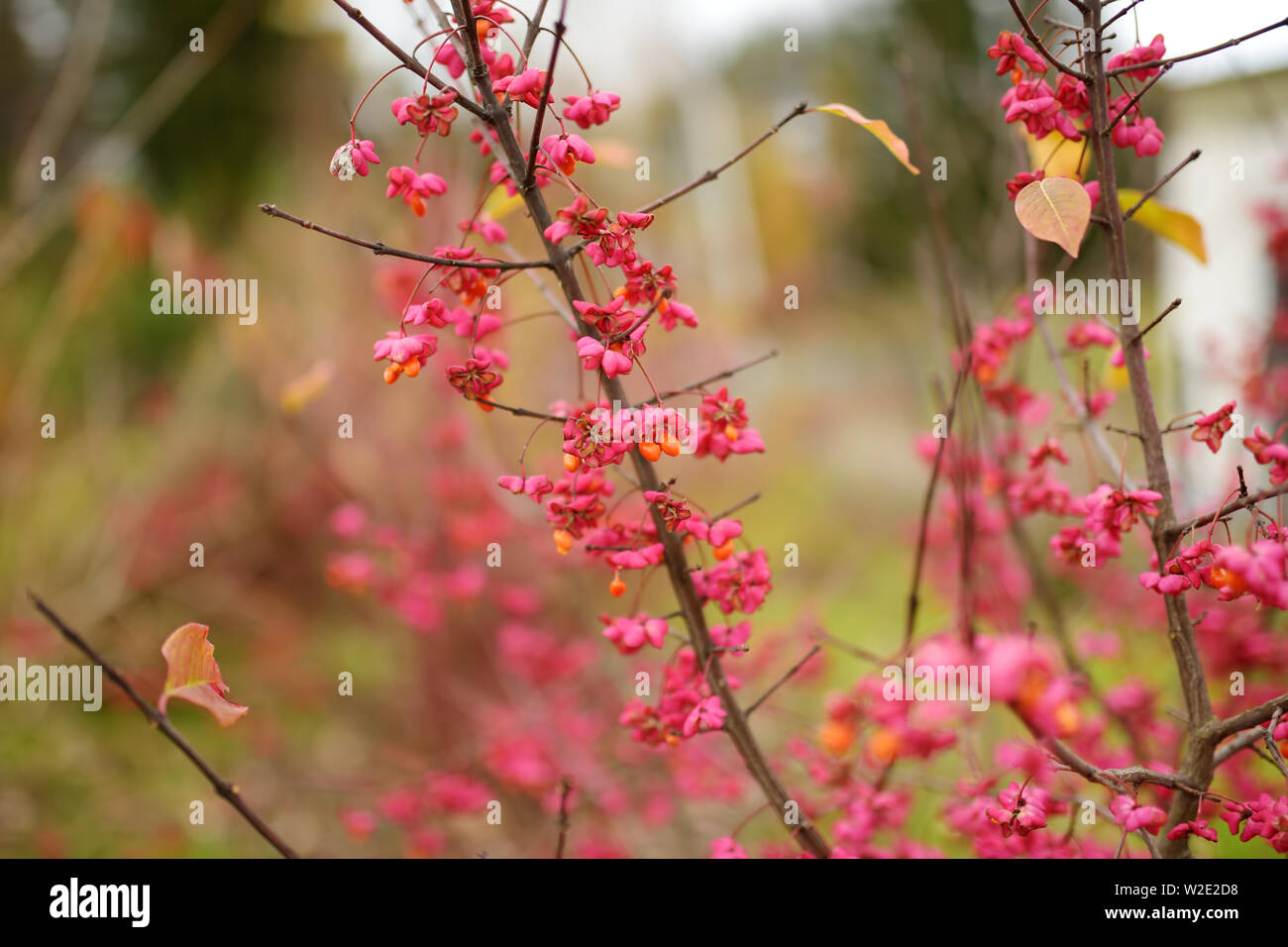
Bright red fruits of euonymus alatus. Winged spindle, winged euonymus or burning bush. Beautiful
Euonymus alatus (E. alatus) is a medicinal plant used in some Asian countries for treating various conditions including cancer, hyperglycemia, and diabetic complications. This review outlines the phytochemistry and bioactivities of E. alatus related to antidiabetic actions. More than 100 chemical constituents have been isolated and identified from E. alatus, including flavonoids, terpenoids.
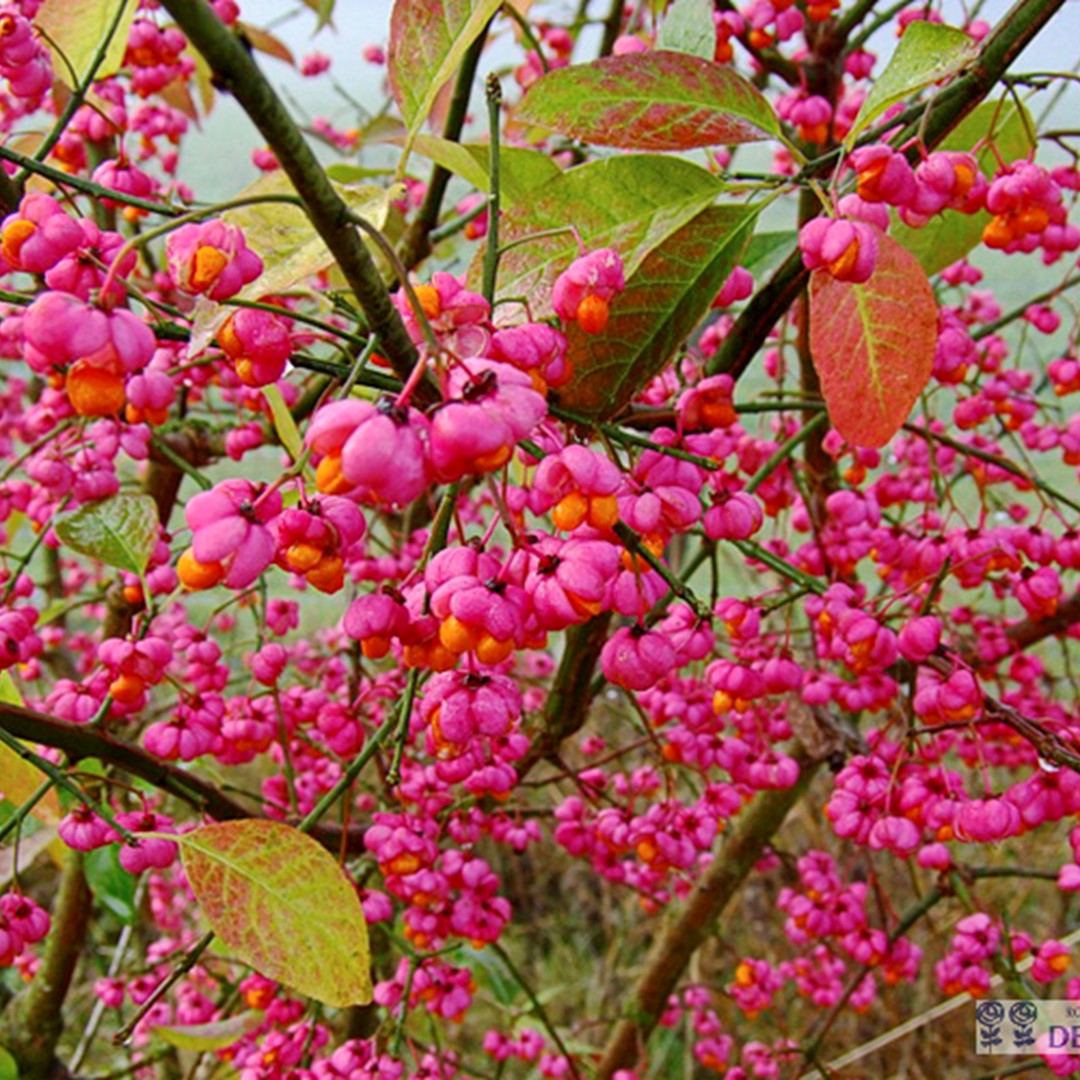
Euonymus alatus kardinaalshoed
Euonymus alatus (Burning Bush) Burning Bush, Winged Spindle Tree, Winged Euonymus, Winged Burning Bush Noted for its fluorescent fall foliage and very ornamental berries, Euonymus alatus (Burning Bush) is a large, spreading, deciduous shrub of great popularity.

Euonymus alatus Fusain ailé Van den Berk Pépinières
Burning bush was first imported to the U. S. in 1860 as a popular ornamental shrub, and is now found everywhere along roadsides, forests edges, and fields. It is considered an invasive species. Birds eat the red fruits and hasten its dispersal around the landscape. Habitat

Fire Ball® Burning Bush Euonymus alatus Euonymus alatus, Burning bush, Peach tree diseases
Description 'Compactus' is a dwarf cultivar of winged burning in the Celastraceae family. It is a deciduous shrub that, as its name implies, is a relatively more compact version. Unlike Burning Bush, which can reach heights of 20 feet, the 'Compactus' cultivar is a more manageable 10 feet tall.

Euonymus alatus fruit hires stock photography and images Alamy
Habit: Deciduous; growing up to 15-20 ft in height and in width; multiple stemmed with a broad closed crown; angular branching. Leaves: Elliptic leaves are simple, opposite or sub-opposite; 1-3 in long and 1/2 to 1 1/4 in wide; finely toothed margins. Leaves turn a bright red in the fall before dropping.

Euonymus Alatus
The European spindle tree ( Euonymus europaeus) is a deciduous plant that can be grown as either a large shrub or small tree. It is native throughout Europe and into the western regions of Asia. And it has been cultivated in North America, where it can thrive to the point of becoming an invasive species in some areas.

Euonymus alatus Winged Euonymus, Dwarfwinged burning bush) North
The fruit which appears from September to October are reddish capsules that split to reveal orange fleshy seeds. Ecological Threat Euonymus alatus can invade not only a variety of disturbed habitats including forest edges, old fields, and roadsides but also in undisturbed forests. Birds and other wildlife eat and disperse the fruit..
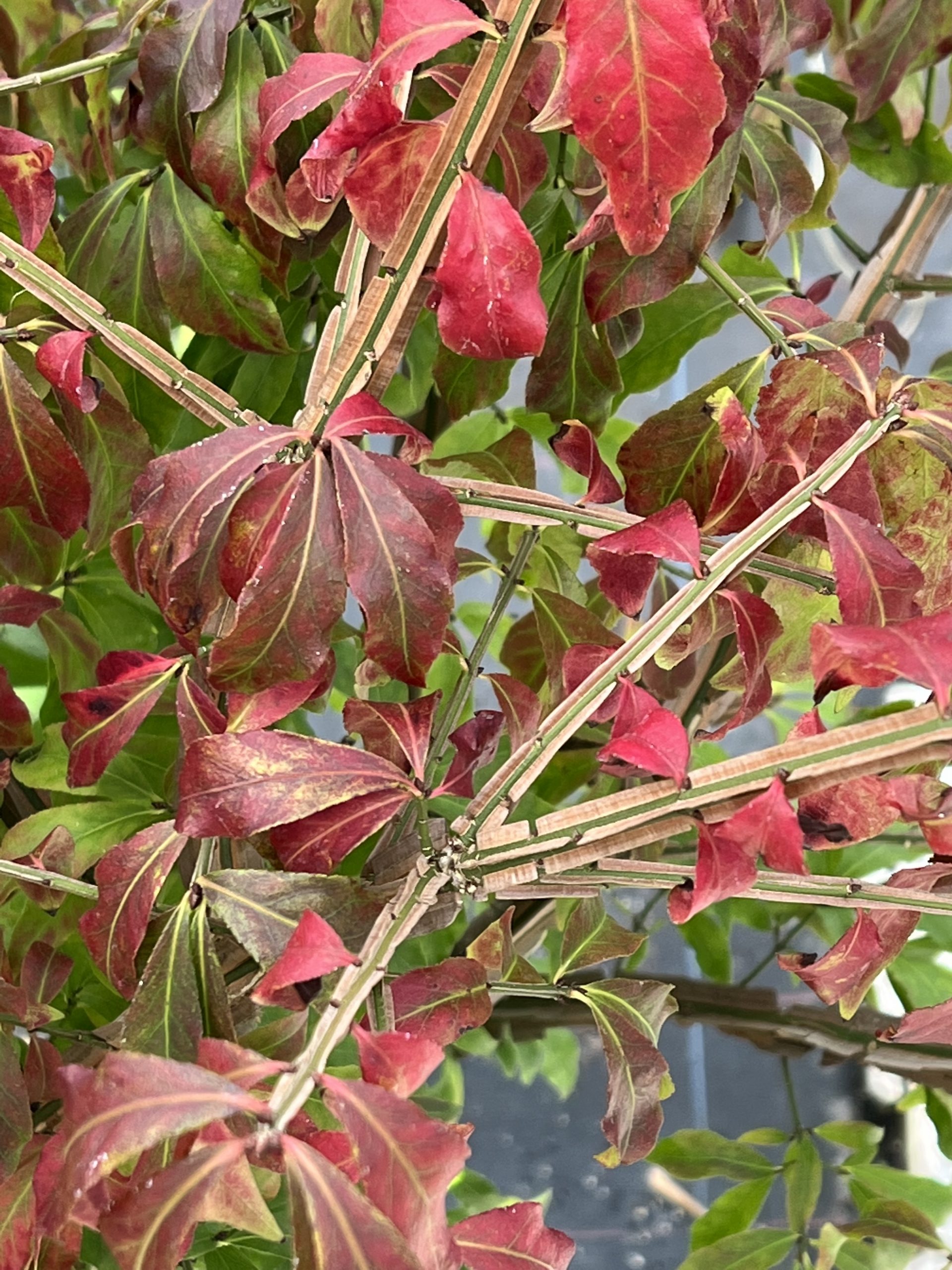
Euonymus alatus Shop Established Euonymus Proctors Nursery
Euonymus, or Spindletree, is a genus of deciduous or evergreen flowering shrubs containing about 140 species and several cultivars. Native to East Asia, species are widely distributed in Canada and the continental United States. In nature, it is often found in mixed deciduous forests or natural areas in low woodlands.
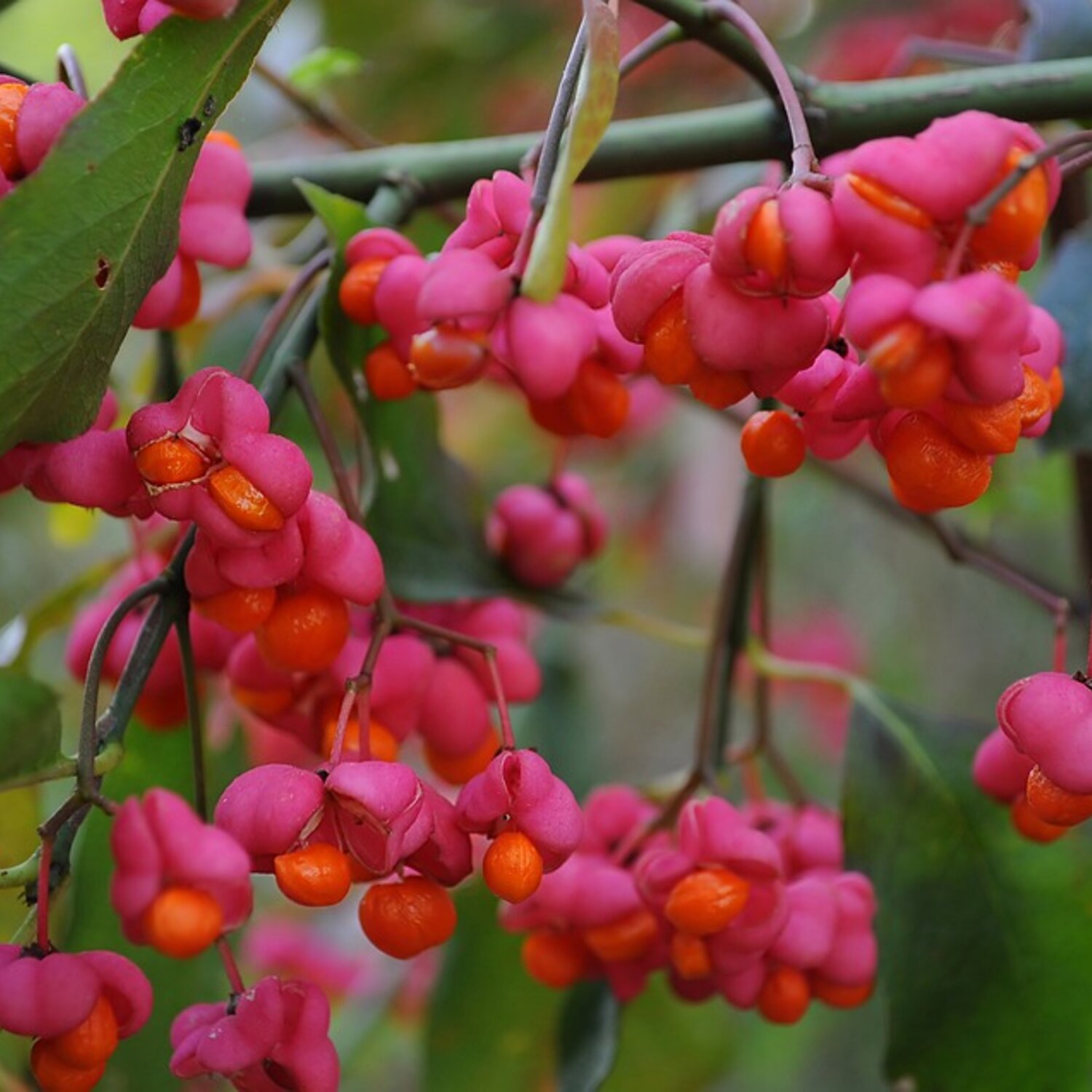
Euonymus alatus Boomkwekerij Peers
Euonymus alatus, commonly called winged euonymus, burning bush, winged burning bush or winged spindle tree, is a dense, mounded, spreading, flat-topped, multi-stemmed shrub that is particularly noted for its fiery red fall foliage color. It is native to forests, woodlands and scrub areas in eastern Russia, Japan, China and Korea.

Euonymus alatus Compactus — Stock Photo © odze 168685512
Euonymus alatus is commonly known as burning bush because of its almost neon-red fall color. While this quality—combined with its low maintenance—has made the shrub an ornamental staple in suburban landscaping, it has also become far too common in the woodlands of the eastern United States, where it is recognized as an invasive species in 21 states.

Euonymus alatus. Stock Image B808/0868 Science Photo Library
Burning bush ( Euonymus alatus ), or "winged euonymus," is an extremely popular landscape shrub, even after its invasive habit became known. Originally introduced from Asia in the mid-1800s, its ability to invade natural areas was first documented in the 1970s.